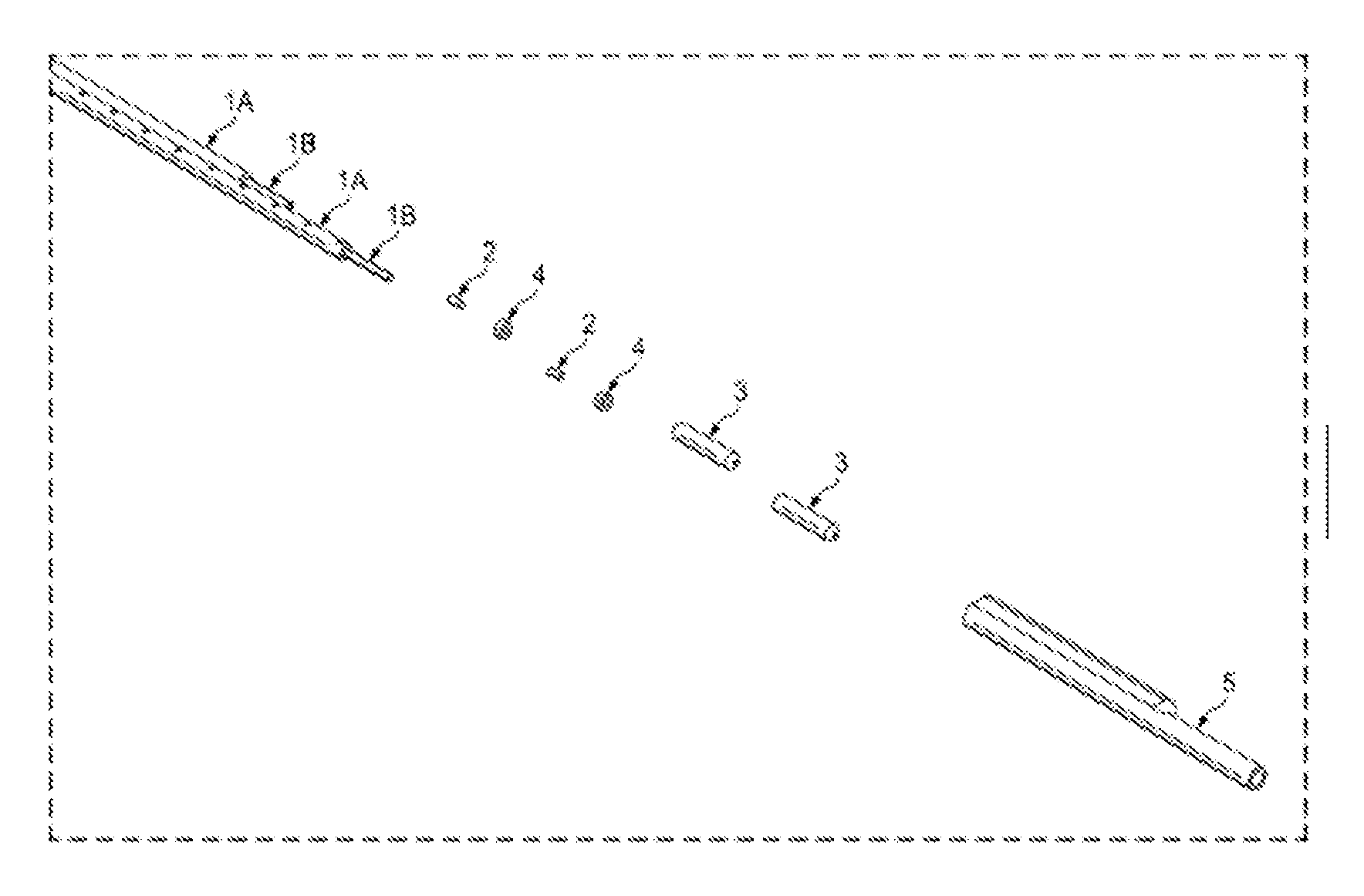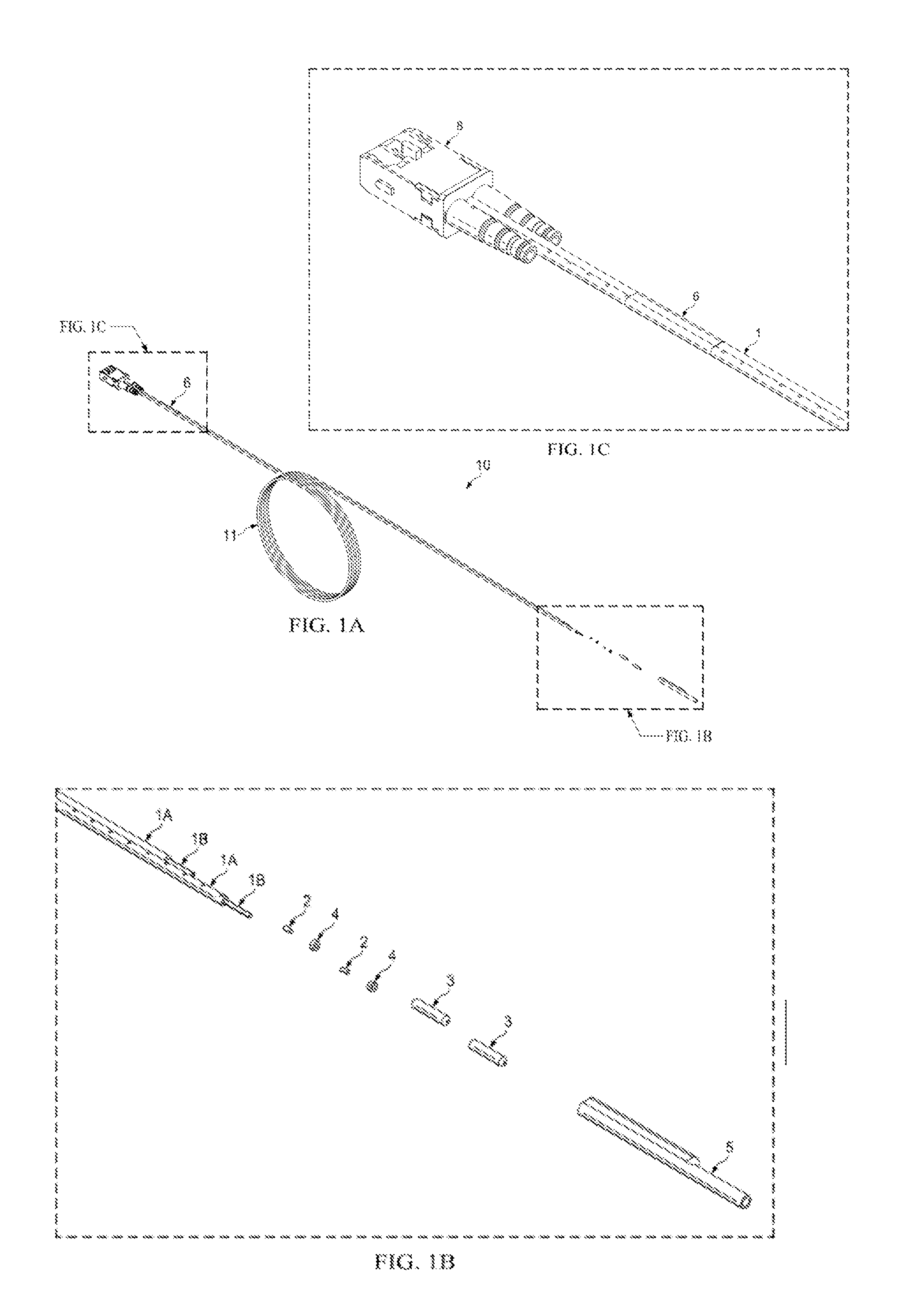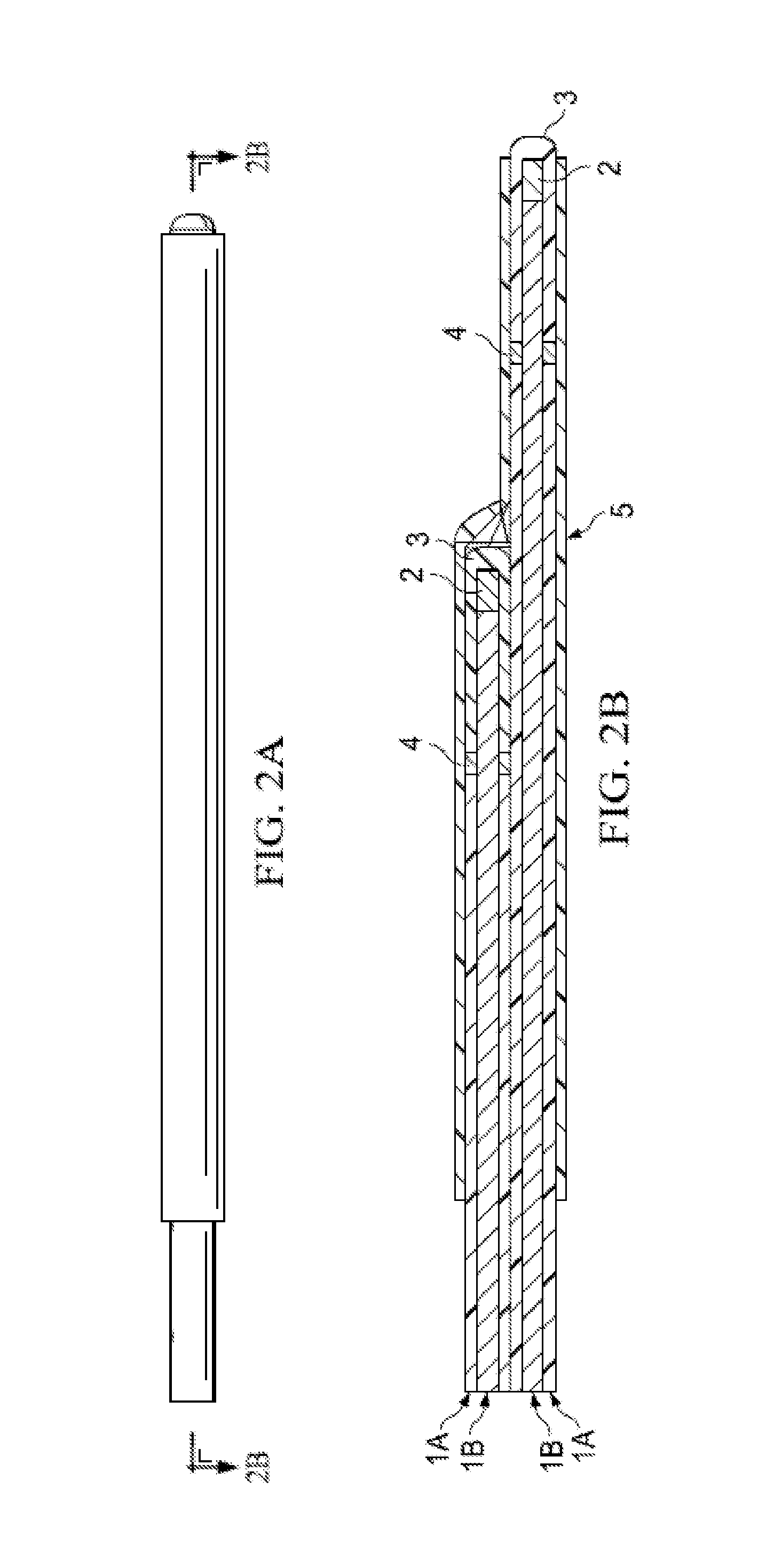Small diameter radiation sensor cable
a radiation sensor and small diameter technology, applied in the field of very small diameter radiation sensor cables, can solve the problems of high cost, high manufacturing cost, and inability to meet the needs of small diameter optical fibers, and achieve the effects of low cost, good strength and fit, and high clarity
- Summary
- Abstract
- Description
- Claims
- Application Information
AI Technical Summary
Benefits of technology
Problems solved by technology
Method used
Image
Examples
Embodiment Construction
[0054]The parts of FIG. 1A-C are listed herein and preferred materials provided:
PartNo.DescriptionPreferred materials1Optical fiberMITSUBISHI SUPER ESKA 1 MMDUPLEX PLASTIC OPTICAL FIBERSH40022Scintillating fiberBCF-60 SAINT GOBAINSCINTILLATING FIBER PEAKEMMISSION 530 NM3fiber capHIGH IMPACT POLYSTYRENE4AdhesiveEPOXY TECHNOLOGIES EPO-TEK 3015Heat shrinkableRAYCHEM THERMOFIT CGPE-105tubingHEAT-SHRINKABLE TUBING6Lot Code LabelNA8AdaptorSCRJ CONNECTOR11Coiled section of cable.NAProtruding ends allowsfor calibration of eachcable and is apreferred packagingmethod.
[0055]Turning to FIG. 1, the duplex scintillation detector cable 10 has a first and second optical fibers 1. The jacket or covering 1A has been stripped or removed from the portion of the first optical fiber 1 adjacent to the distal ends of each fiber (see also FIG. 2B), leaving a portion of each optical fiber 1B exposed. First and second scintillating fibers 2 are shown, along with drop of adhesive 4 and fiber cap 3. The length ...
PUM
| Property | Measurement | Unit |
|---|---|---|
| diameter | aaaaa | aaaaa |
| diameter | aaaaa | aaaaa |
| diameter | aaaaa | aaaaa |
Abstract
Description
Claims
Application Information
 Login to View More
Login to View More - R&D
- Intellectual Property
- Life Sciences
- Materials
- Tech Scout
- Unparalleled Data Quality
- Higher Quality Content
- 60% Fewer Hallucinations
Browse by: Latest US Patents, China's latest patents, Technical Efficacy Thesaurus, Application Domain, Technology Topic, Popular Technical Reports.
© 2025 PatSnap. All rights reserved.Legal|Privacy policy|Modern Slavery Act Transparency Statement|Sitemap|About US| Contact US: help@patsnap.com



